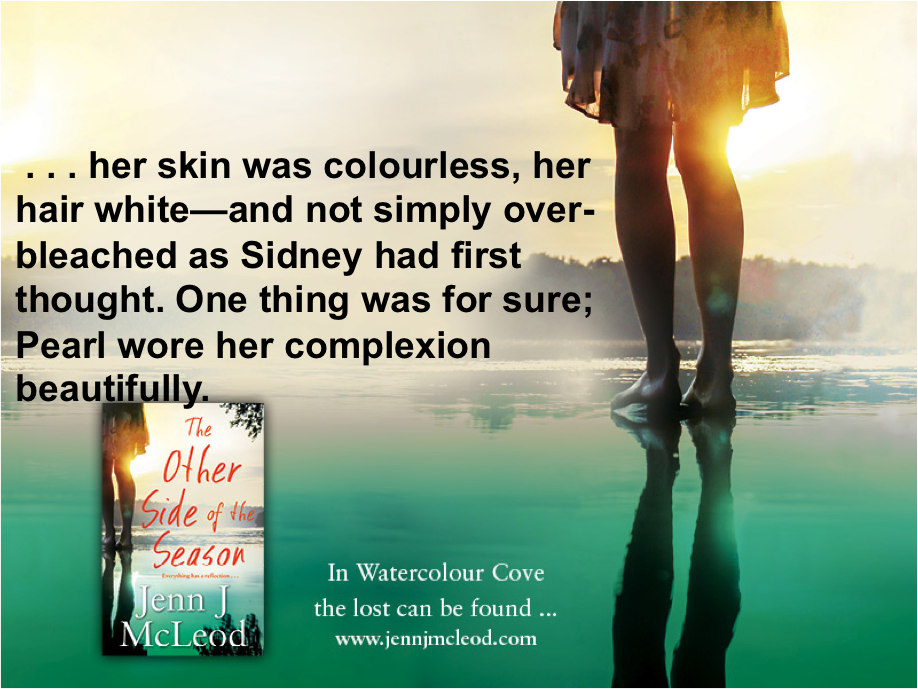
 Meet Pearl…
Meet Pearl…
No, not that pearl!
Pearl is actually the daughter of an oyster farmer in my latest novel, The Other Side of The Season.
Pearl is an example of what we call in the business – a secondary character. This means she was created to support the lead characters, providing them with, among other things, a way to express themselves, to help foreshadow events, or to provide background while still moving the narrative forward. Sometimes, however, a secondary character can go rogue.
Another example of a secondary character is Alice, in Season of Shadow and Light. I created her after I’d finished the initial draft, actually re-writing the manuscript to add Alice as a “nanna/babysitter” to six-year-old Matilda, thus freeing up Paige, the mother, to get on with the story without readers saying: “But where’s the kid”.
Like Alice, Pearl has found her way into the hearts of readers. One reason might be because I let her hook up with Jake, and Jake is, well, I’m told he’s just adorable. But Pearl is pretty special, too, because she’s a little different. And I did that on purpose.
Pearl is a person born with albinism. Some of you might be more familiar with the word ‘albino’ but as I leanred when researching this character there are misconceptions and lots of misrepresentation in certain media about his inherited condition. I wanted to do my bit towards correcting this. It’s said the pen is mightier than the sword and I believe authors have the opportunity to make a difference in the world. Literature can start conversations and lead change. Through their stories, authors provide people with a safe place to explore social differences that they might not otherwise understand or encounter. With all four of my novels I’ve been inclusive, using fiction to normalise that which society may see or label otherwise. I do this by including characters with differences — although not focusing on the ‘different’ or applying a label to it. Acceptance comes from understanding. If things like sexual orientation, illness, race, language, physical traits/conditions and psychological issues are included into everyday fiction maybe they will one day become ‘the norm’.
 You might have noticed I thanked Dr Shari Parker in my acknowledgements. If you Google the name, or go to the Albinism Fellowship of Australia website, you’ll learn a lot more about living with albinism and the importance of ending the myths created in some books and films that depict people with albinism as evil villains or supernatural freaks. I am very appreciative of Shari’s assistance.
You might have noticed I thanked Dr Shari Parker in my acknowledgements. If you Google the name, or go to the Albinism Fellowship of Australia website, you’ll learn a lot more about living with albinism and the importance of ending the myths created in some books and films that depict people with albinism as evil villains or supernatural freaks. I am very appreciative of Shari’s assistance.
Dr Shari Parker: “Albinism is an inherited condition where the body produces less than normal amounts of melanin – a substance that gives skin, hair and eyes colour. About one in 17,000 Australians is born with albinism and about one in 75 carries an albinism gene. If a carrier mates with another, they have a one-in-four chance of a baby with it.”
Read more: http://www.theage.com.au/national/albinos-think-its-time-the-world-played-fair-20111007-1ldvk.html#ixzz4CxDT37C9
Follow us: @theage on Twitter | theageAustralia on Facebook

